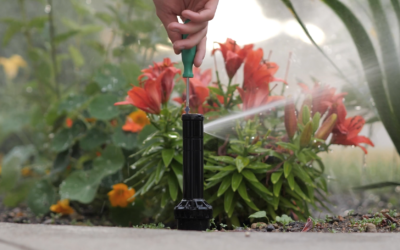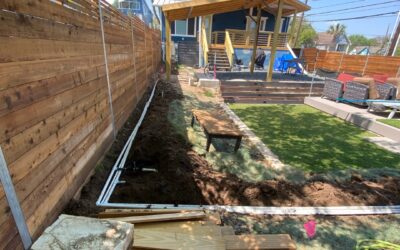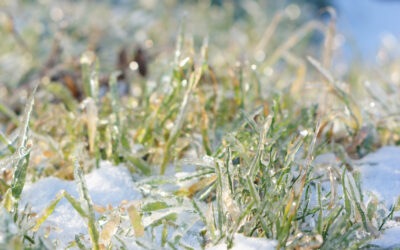The Ultimate Guide to Sprinkler and Irrigation Systems for Your Lawn and Garden
A well-designed sprinkler and irrigation system can make all the difference between a vibrant lawn and a patchy one. These systems save time, money, and water when used properly. Whether you’re a homeowner or business owner, understanding sprinkler and irrigation systems can help you maintain a beautiful, lush landscape. In this guide, we’ll cover everything you need to know, from installation tips to seasonal maintenance.
Understanding Different Types of Irrigation Systems
Choosing the right sprinkler and irrigation system is crucial for achieving efficient watering and beautiful results. Here’s a breakdown of the primary types of irrigation systems, each designed to meet unique landscape needs.
Sprinkler Systems
Sprinkler systems are commonly used for covering large lawns and open areas. This type of sprinkler and irrigation system distributes water evenly across the landscape through rotating or fixed heads, with popular types including:
- Rotary Heads: Best suited for larger lawns, these heads rotate to cover a wide area, making them ideal for spreading water efficiently.
- Spray Heads: Often used in smaller lawns or flower beds, spray heads deliver a more focused, short-range spray.
- Impact Sprinklers: Known for their durability and larger coverage radius, these sprinklers are often found on commercial properties.
For professional guidance on selecting the best sprinkler setup, explore our Installation Services. For more on types of sprinklers, visit the EPA WaterSense Program, which provides guidance on efficient irrigation systems.
Drip Irrigation
Drip irrigation is a water-efficient solution designed for targeted watering, often used in garden beds or vegetable patches. This system delivers water directly to the root zones of plants, reducing evaporation and minimizing water waste. Drip irrigation is ideal for landscapes with specific water needs and plants that prefer consistent moisture.
Smart Irrigation Systems
Smart irrigation systems integrate advanced technology, such as sensors and weather data, to adjust watering schedules automatically. These systems are eco-friendly and provide maximum convenience by watering only when needed, which helps conserve water and lower your water bill. Smart systems are perfect for busy homeowners or those looking to make their irrigation setup more sustainable. For further reading, check out the Irrigation Association’s Guide to Smart Irrigation.
Sprinkler System Installation: Key Considerations
Installing a sprinkler and irrigation system requires careful planning to ensure it meets your lawn’s specific needs. Here are some key factors to consider when planning a new installation.
Property Size and Layout
The size and shape of your lawn will heavily influence the type of system you need and its layout. Larger properties often require more sprinkler heads and longer piping, which increases costs. Smaller properties, on the other hand, may be better suited for compact spray heads.
Soil Type
Soil type affects water absorption rates, so it’s crucial to choose the right sprinkler head and watering schedule. Sandy soils absorb water quickly but require more frequent watering, while clay soils hold moisture longer, meaning you can space out watering sessions.
Water Source
Your water source (municipal water or a private well) impacts the system’s design. Municipal water sources typically require backflow prevention devices, while well water systems may need additional filtering. Ensure the system complies with local regulations for water safety.
Seasonal Adjustments and Weather
Installations should account for weather patterns in your area. For example, sprinkler systems in areas with hot summers should be positioned to minimize evaporation, while systems in colder climates require winterization to prevent freezing.
Heartland Sprinklers offers tailored installation services for optimal performance, so check out our Installation Services to get started.
Maintaining Your Sprinkler System Year-Round
Regular maintenance ensures your sprinkler and irrigation system operates efficiently, preventing water waste and prolonging the system’s life.
Seasonal Adjustments
Each season has different watering needs. During hotter months, lawns generally require more frequent watering. In spring and fall, you can reduce watering frequency to prevent overwatering and save on utility costs. Setting up seasonal adjustments is easy with a programmable controller, especially with smart systems.
Regular Inspections
Inspect your system regularly for leaks, broken heads, or clogged nozzles. These issues can lead to uneven watering and increased water bills. Checking your system every month or seasonally ensures timely fixes and keeps your lawn healthy.
For maintenance packages tailored to your needs, explore our Maintenance Services.
Cleaning and Clearing Debris
Sprinkler heads can accumulate dirt and debris, blocking water flow and causing uneven watering. Regularly cleaning each head and clearing debris from the area prevents clogs and ensures even coverage across your lawn.
Sprinkler Repair for Common Issues
No system is perfect; even well-installed sprinklers may require repairs. Here’s a look at some common sprinkler system issues and how to handle them.
Detecting and Fixing Leaks
Leaks in a sprinkler system can waste significant water and damage your lawn. Signs of leaks include pooling water, unusually green patches of grass, and high water bills. If you spot a leak, inspect the area carefully to determine if it’s a broken pipe, damaged head, or valve issue.
Replacing Broken Heads and Nozzles
Broken or clogged sprinkler heads are a common issue. Replacing damaged heads ensures that your lawn gets uniform water distribution, preventing dry spots. Always choose a nozzle that matches the existing system for optimal performance.
Adjusting Spray Patterns
Sometimes, spray patterns shift over time, leading to inefficient watering or missing certain areas. Regularly check and adjust spray patterns to ensure your lawn is fully covered.
To address any of these issues, check out our offers comprehensive Repair Services.
Winterizing Your Sprinkler System
In colder climates, winterizing is essential to protect your sprinkler system from freezing temperatures.
Clearing Water Lines
Use the blow-out method to remove all water from the lines, which prevents frozen pipes and reduces the risk of pipe bursts. This process should be done carefully, as too much pressure can damage the pipes.
Insulating Exposed Parts
Insulate any above-ground parts, including valves and backflow preventers, to keep them safe from freezing. Winterizing kits are available for DIY projects, or you can hire a professional to handle it.
Adjusting Timers and Controllers
Set your system’s timer to the off position to avoid accidental activation during the winter. Many systems also have a “rain mode” that keeps the timer on but disables watering functions.
The Benefits of Automated Irrigation Systems
Automated or “smart” irrigation systems offer advanced features that make lawn care easier and more efficient.
Customized Scheduling
With automated systems, you can customize watering schedules for different areas (zones) in your yard. This flexibility is especially useful for properties with diverse landscapes, such as lawns, gardens, and shrubs that need varying water levels.
Water Conservation
Smart systems monitor weather patterns, soil moisture, and rainfall, allowing them to adjust watering schedules automatically. This feature saves water and lowers utility bills, especially in drought-prone areas.
Convenience and Reduced Maintenance
Automated systems reduce the time spent on manual adjustments. Many also come with app integration, allowing you to manage your system remotely. For people with busy schedules, this convenience is invaluable.
Choosing the Right Sprinkler and Irrigation System for Your Landscape
Selecting the ideal sprinkler system involves evaluating several key factors:
- Property Size: Larger properties benefit from rotary heads, while smaller spaces might be suited to drip systems or spray heads.
- Plant Type: Lawns, flowers, and gardens each have unique water needs, so choose a system that suits your plant types.
- Budget: Balance your budget with desired features and long-term maintenance costs.
For a custom solution, Request a Quote from Heartland Sprinklers.
Conclusion
A well-designed and maintained sprinkler or irrigation system keeps your lawn lush, reduces water waste, and simplifies lawn care. Heartland Sprinklers offers professional services to ensure your system meets your needs and lasts for years.



